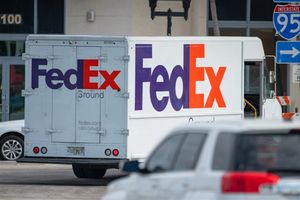As providers of a pay-per-use fax service, we’re happy to find ourselves aligned with a broader consumer shift away from subscription fatigue. People are increasingly questioning whether they need monthly access to everything – or just occasional access when they actually need it. We’ve researched this trend and here’s what we’ve found.
The numbers are striking. The average US household now pays $273 monthly across 12 different subscriptions, though these figures vary depending on which research firm is counting and what they include. More telling: 42% of consumers unknowingly pay for unused services, and 40% report feeling overwhelmed by managing multiple subscriptions.
When did buying software become renting it forever?
The Extreme End: Adobe’s Subscription Trap
Adobe provides the clearest example of where subscription models can run amok. They converted Photoshop from a one-time $600 purchase into a $240 annual rental. Cancel early? You’ll pay a 50% penalty on all remaining monthly payments. The Federal Trade Commission sued them in 2024 for hiding these fees, with internal documents revealing an Adobe executive calling early termination fees “a bit like heroin for Adobe.”
The case details are still emerging, but the pattern highlights why consumers are seeking alternatives. When subscription models prioritize company revenue over user flexibility, they create the conditions for consumer backlash.
How We Got Here (And Why It Matters for All Services)
The “$9.99 per month” psychology makes spending feel painless, but those charges accumulate quickly. Subscription fatigue isn’t universal – some users genuinely prefer predictable monthly bills over transaction-by-transaction decisions. A colleague maintains three streaming services she rarely uses because “I don’t want to think about it when I do want to watch something.”
But early indicators suggest people are hitting their limits. Thirty percent of annual subscriptions get canceled in the first month, suggesting buyer’s remorse or sticker shock when real costs become clear.
The monthly model works brilliantly for companies – predictable revenue, higher customer lifetime value, natural lock-in through switching costs. Whether it benefits consumers depends entirely on usage patterns, and most people struggle to predict their own consumption accurately.
Pay-Per-Use Models Gaining Ground
The shift toward usage-based pricing is happening unevenly across industries, but the momentum is real.
Entertainment leads the way. Streaming platforms now offer individual movie rentals alongside subscriptions, typically $3-6 per film. This hybrid approach lets users avoid adding yet another monthly service for occasional viewing. Amazon Prime Video and Apple TV+ have embraced this model aggressively.
Fitness found early success. ClassPass completely abandoned its unlimited monthly model around 2018-2019, switching to credits that users spend on individual classes. This wasn’t necessarily consumer-driven – unlimited models were probably unsustainable given gym economics. But users adapted quickly, spending 5-30 credits per class depending on popularity and timing.
Education offers both models. Coursera sells individual courses for $30-100, competing directly with their unlimited subscription option. For someone learning one specific skill, paying once makes more sense than recurring charges. Both approaches seem to have found viable audiences.
Gaming perfected the model. Mobile games generate billions through microtransactions, letting players spend $1-100+ on virtual items as desired. This works because value is immediately visible and consumption is voluntary.
Business services are experimenting. Our own fax service charges $2 per transmission with no monthly fees. This makes sense for users dealing with occasional government paperwork or medical offices that still require fax transmission. Why pay monthly for something you might need twice a year?
But pay-per-use isn’t automatically superior. Transaction fees can exceed subscription costs for heavy users. Decision fatigue from evaluating individual purchases can be worse than monthly autopay. Some services require predictable revenue streams to invest in infrastructure and content.
What This Actually Means for Your Budget
Here’s what people discover when auditing their monthly charges: some subscriptions make perfect sense, others represent pure waste.
Netflix gets used almost daily in most households – that monthly fee pays for itself quickly. But that fitness app downloaded with good intentions? If it’s been opened twice since January, you’re paying $120 annually for guilt. Same with productivity tools that seemed essential during signup but now collect digital dust.
The key is matching payment method to usage reality, not usage intentions. Be honest about actual habits. That meditation app subscription assumes regular use. The pay-per-session alternative charges $3 when you actually meditate. Which aligns better with your real behavior?
Some people find hybrid approaches work best. Keep subscriptions for daily-use services. Switch to pay-per-use for everything else. One person we spoke with kept Spotify and Netflix but switched to renting individual movies instead of maintaining three other streaming subscriptions. Her entertainment costs dropped 40%.
The psychological barrier involves giving up “just in case” access. You might want to watch something on Paramount+ someday. But “someday” costs $6 monthly whether it happens or not. The $4 movie rental only costs money when “someday” becomes “today.”
The Practical Reality Check
This isn’t about completely avoiding subscriptions – that would be impractical for most people. It’s about being more selective.
Look at your bank statement from the past three months. Circle the recurring charges you’ve actually used. Cross out the ones you forgot existed. For services used occasionally, check whether pay-per-use alternatives exist.
Design tools for occasional projects, individual movie rentals for date nights, single course purchases for specific skill development – these make natural candidates for pay-per-use rather than monthly subscriptions.
The subscription model works when usage is frequent and predictable. It breaks down when you’re paying for potential access rather than actual consumption. Companies understand this, which explains why cancellation processes are often deliberately complex and why free trials convert automatically to paid plans.
Regulatory pressure on companies like Adobe might force clearer pricing disclosure and easier cancellation. But waiting for regulatory fixes won’t solve current subscription bloat. The solution requires taking control of what you’re willing to pay for monthly versus occasionally.
Most people could reduce monthly recurring charges by 30-40% without losing actual functionality – just by switching occasional-use services to pay-per-use models. The convenience of autopay has trained us to accept monthly charges as normal, but normal and necessary aren’t equivalent.
Why This Trend Benefits Everyone
From our perspective as a pay-per-use service provider, this shift represents a return to more transparent pricing. Users pay for what they consume, when they consume it. No hidden fees, no cancellation penalties, no forgotten charges on credit card statements.
But the benefits extend beyond individual services like ours. When companies must earn revenue through actual usage rather than subscription inertia, they focus more on delivering value per transaction. When users can easily walk away after any single interaction, service quality becomes paramount.
The subscription economy trained consumers to accept monthly charges as normal, but normal doesn’t mean optimal for every use case. The companies now offering usage-based alternatives are testing whether transparent, consumption-based pricing can compete with the simplicity of monthly autopay.
Based on current trends and our own experience, that test is producing encouraging results. Consumers seem ready for more flexibility and transparency in how they pay for services.
Full analysis with sources originally published by PayPerFax at payperfax.com/pay-per-use-revolution
Media Contact
Company Name: Ediblesites Ltd
Contact Person: Media Relations, PayPerFax
Email: Send Email
Country: United Kingdom
Website: https://payperfax.com


















